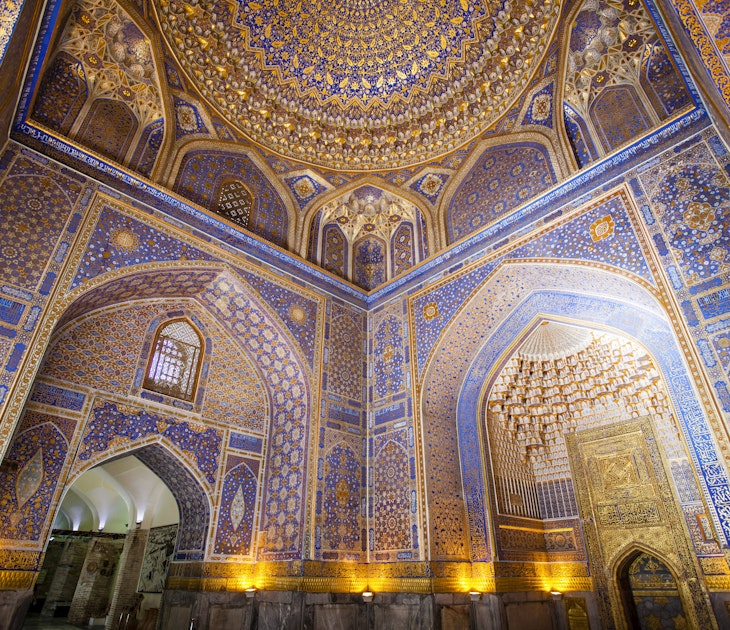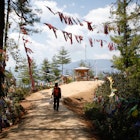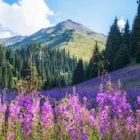
Kazakhstan or Tajikistan? Where should you visit next after Uzbekistan?

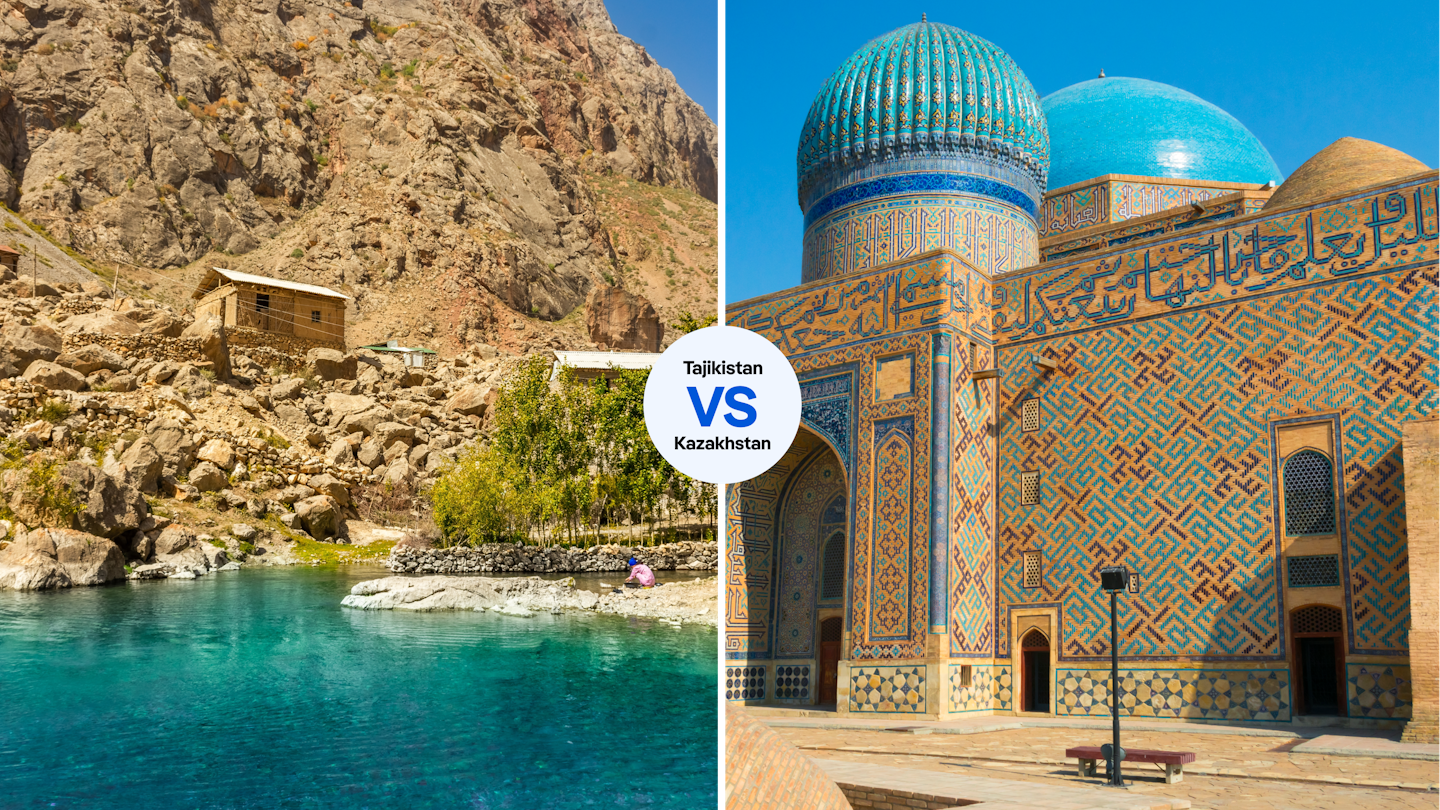
Tajikistan and Kazakhstan each offer unique travel experiences. Which one are you visiting? L: Stefano Zaccaria/Shutterstock, R: JOMA.image / Shutterstock
If, like most travelers, you associate Central Asia with the glorious Silk Road cities of Khiva, Samarkand and Bukhara, then you’re likely to head first to the region’s most populous and popular tourist destination, Uzbekistan. Visa liberalization and a whole new visitor-friendly face makes that a great choice, but there’s much more to the “‘stans” than those gem cities.
So which other Central Asian country should you tack on to your Uzbekistan exploration to round out the experience? After all, the region’s allure is partly its very isolation. Should you head north and northwest into the vastness of Kazakhstan with its flashy capital, grand canyons and great skiing? Or southeast into Tajikistan with its soaring peaks, lovely lakes and iconic Pamir Highway, the world’s second highest international road?
It’s a tough call – we asked a dueling duo of writers to help you make this difficult decision.

Feel the frisson of adventure in Tajikistan
Mark Elliott is a travel writer who has been visiting Central Asia regularly since co-authoring the classic 1990s guide Asia Overland. He even married a fellow traveler he first met at a Turkmenistan camel market.
For me Tajikistan is all about old school adventure – journeys are arduous enough to make you feel you’ve earned the country’s scenic glories, and to slow you down so that you're ready to absorb those awe inspiring moments that often come unexpectedly. Meanwhile there’s just enough uncertainty to put off the kind of tourists who don’t enjoy spontaneity (and aren’t prepared to leave a spare day or two in case of road closures or revised border rules).
What makes Tajikistan worth visiting is that it puts majestic mountains right in your path and offers glimpses of Afghanistan without the dangers of being there. You don’t have Kazakhstan’s vast distances to cope with, and if you’re coming from Uzbekistan you can just nip across the border from Samarkand to Panjikand for a day – or three – to walk in the Lakeland landscapes of the fabulous Fann Mountains.
Most hardy travelers who spend longer in Tajikistan come for the world’s second-highest international road, the Pamir Highway in the country’s far southeast. It's a thrilling multi-day odyssey that climbs through the culturally fascinating Pamir region where you'll find additional delights in the warm welcomes from village homestays. Sleep in outwardly simple Pamiri box-houses that have a surprise in store: step inside and you’ll find each home has incredible cedar beam-work and complex faceted wooden ceilings, all carefully designed with deep cosmological symbolism.
The Pamir Highway’s southern route passes ruined forts and offers many spectacular viewpoints that look out over the river separating the country from Afghanistan’s Wakhan Corridor (always check safety advisories before visiting). As of summer 2024, the Saturday market at Ishkashim once again fallows locals and visitors to meet Afghan traders at the cross-border bazaar.
Further northeast, the Pamir highway heads towards Kyrgyzstan, snaking up into a mesmerizingly stark upland plateau to the culturally Kyrgyz settlement of Murgab – the town may be a bit architecturally drab, but it's exuberant during the late-July At-Chabysh horse festival, a cacophony of traditional sports and horsemanship displays that’s solidly local. There are two great lakes to explore en route: mountain-rimmed Kara Kul and mirror-calm Bulunkul, surreal in its bone-dry moonscape surrounds.
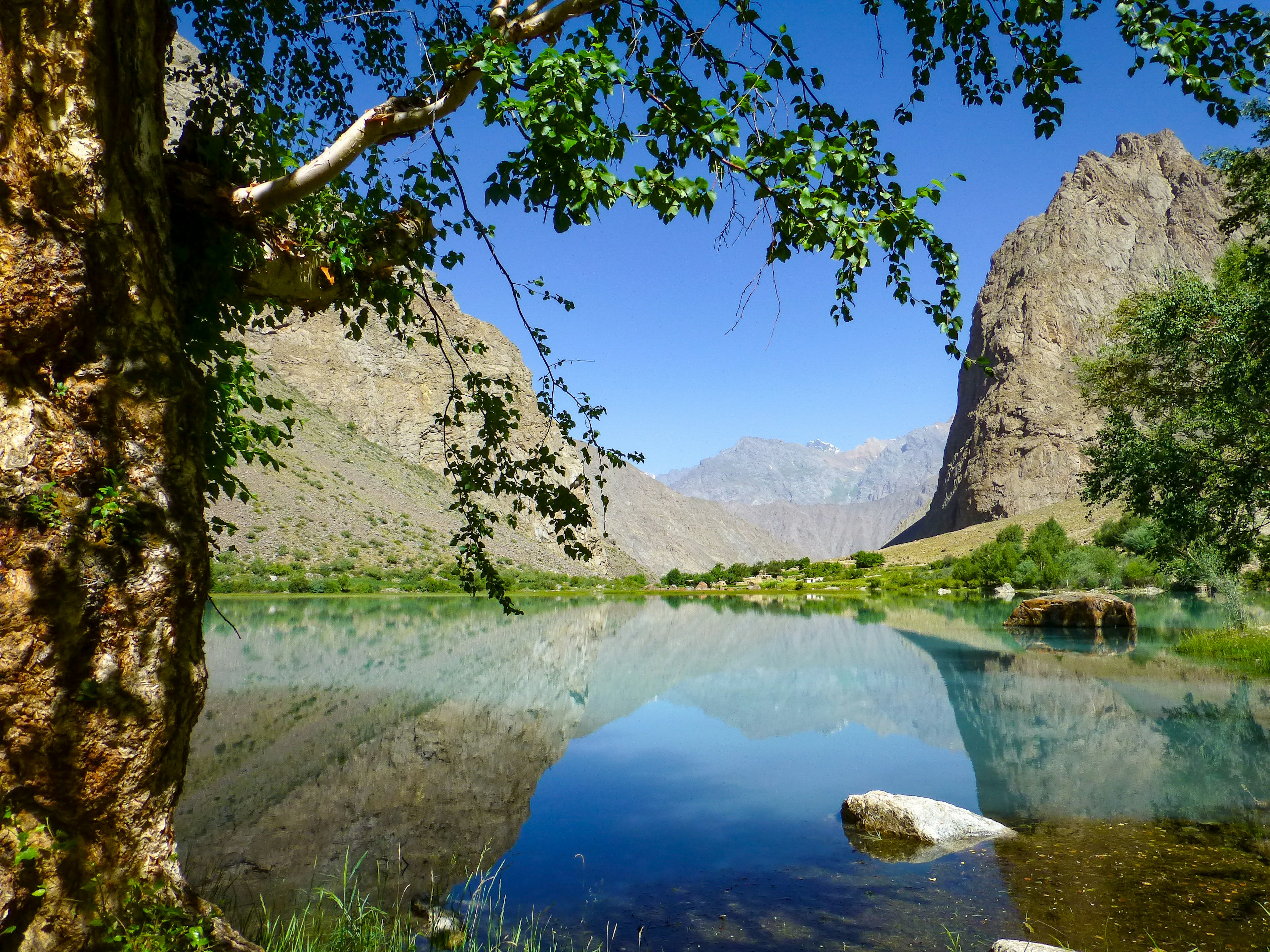
Despite the photogenic appeal of these mesmerizing scenes, the highlight of Tajikistan for me lies much further west in the hidden, utterly unspoiled lakeside village of Jizeu, which alone justifies a whole trip to the region. It’s one of those few places that elicits an eye-widening gush of awe and a very human sense of having found the original Garden of Eden. Rub your eyes and look again between green wisps of tree frond. Yes, those super-saturated colors are real. The dazzling blues. The reflection of towering rocky crags. The glow of sunset on the backdrop peaks. Then there’s the discreet modesty of the little houses and gardens on the lakeside, where almost every family offers a homestay while still running entirely genuine working farmsteads.
You can only get to Jizeu on foot, and the access trail is on the "wrong" side of the powerful river that pounds through the Bartang Valley. The first time I visited, the experience was made all the more extraordinary by the fact that there was only one way across the river here: on a dangling metal basket pulled across on pulley wires. These days the basket has been replaced by a rickety footbridge, but it’s still an atmospheric start to the two hour access walk.
And then, of course, there’s the fast-changing capital, Dushanbe, with its unexpected record breakers: the world’s biggest tea house and world’s former tallest flagpole [now 4th]). Here there’s one more walk you shouldn’t miss: an hour or two’s hike up the Darshai Gorge. It’s not so much the destination that’s the attraction, but the toe-curling stretches of footpath where the trail hugs an almost vertical cliff wall. The path has been built out to walkable width using a makeshift collection of sticks, stones and the odd wire, and the experience offers another micro-adrenaline rush to join the collection of off-beat discoveries that make Tajikistan such an unforgettable adventurer’s delight.

Dive into culture in Kazakhstan
Born and raised in Kazakhstan, travel writer Laura Seidanova is a nomad at heart. Her love for the country has taken her to its far corners, as she amasses stories she hopes to one day share with her grandchildren.
A Kazakh proverb says, "Before asking about business, first offer your guest tea." Yes, here in Kazakhstan, we drink tea – a lot. Even in the scorching summer heat, it's our moment of meditation when everything around us pauses, allowing us to savor the small, happy moments of life.
Tourists may travel to Tajikistan for mountain hikes, but Kazakhstan has breathtaking landscapes with towering mountains, vast steppes where wild horses roam, serene big lakes and lush pine forests. These natural wonders exist alongside ancient cultural heritage, offering a striking contrast between modern cities and untamed surroundings. Our nomadic culture has mastered the art of wandering while maintaining a great regard for the environment.
Before setting out on a journey, Kazakhs embrace positive intentions, hoping for a smooth path and warm encounters. For us, travel is more than just exploring new places – it’s a chance for personal growth. Whether you’re reconnecting with nature, discovering vibrant cities, embarking on a spiritual pilgrimage, it’s important to seek experiences that nurture resilience, broaden perspectives, deepen empathy and build confidence.
Kazakhstan's cultural magnificence and historical wealth will captivate any traveler. When I traveled to the Kazakh city of Turkestan, I felt like I had stepped back in time, immersed in ancient history. Turkestan, bathed in golden sunlight, is a captivating blend of ancient sand-colored structures and glistening turquoise domes, all set against a deep blue sky. I strolled along clay-walled walkways and stopped at lively bazaars to find souvenirs such as shapan (traditional robes), tumar (amulets), kumis cups, Kazakh jewelry, dombyra (traditional string instruments) and chocolates from Rakhat. The Khoja Ahmed Yasawi's magnificent mausoleum was also breathtaking, and camels sat around peacefully nearby while gophers popped in to play – it was lovely!
Kazakhstan also harbors a trove of natural treasures that attract ecotourists from all over the globe. The world's ninth largest country provides a variety of eco-friendly travel routes, particularly through its outstanding national parks, which include Altyn-Emel, Ile-Alatau, Katon-Karagay, Burabay, Karkaraly and Aksu-Zhabagly.

Aksu-Zhabagly, one of Kazakhstan's oldest national parks, is an incredible place home to rare plants like Greig and Kaufman's tulips. This part of south Kazakhstan turns into a breathtaking red floral carpet during March and April, and seeing this vibrant spectacle was unforgettable. Just remember, these tulips are well protected – mistreating them can get you fined up to 11 million tenge! So, admire them with care and save your wallet.
Kazakhstan isn’t just about history and landscapes; it boasts a few mesmerizing modern cities, every with its own vibe. Astana (Nur-Sultan) dazzles with its futuristic skyline punctuated by the Baiterek Tower and Khan Shatyr; it's like a scene from a sci-fi dream. Almaty, nestled against the majestic Trans-Ili Alatau mountains, is a haven for artists. Here, you can sip espresso in chic cafes, explore art galleries or hike the nearby mountains. Then there is Shymkent, one of our oldest cities, where the mix of ancient and new creates a completely unique appeal. Grab a kurt (a salty dried cheese snack) and explore the city’s lively bazaars.
While the landscapes, architecture and history are impressive, it's the people who truly shine here. In Kazakh culture, guests are highly respected. The the tradition of "yerulik" welcomes visitors into homes, while the "dam ayuz tiu" tradition ensures that guests never leave hungry. The result? Guests are served hearty meals that often feature beshbarmak, Kazakh dish of boiled meat (lamb, beef, or horse) served over flat noodles. Every meal and cup of tea is a warm hug, an invitation to interact and experience Kazakh hospitality.
Growing up in Kazakhstan, I played on the same street as Uzbek, Azerbaijani, Korean, Russian and Uyghur children. Later, I discovered that Kazakhstan is home to over 120 nationalities, each with its own culture and traditions. Thanks to this diverse community, no matter where I go, I always feel at home.
Traveling to Kazakhstan is an investment in lifelong memories. It offers unforgettable experiences and stories you'll share with your grandkids, especially the moments you tried horse sausage and fermented camel milk – but that's a story for another time.
Explore related stories
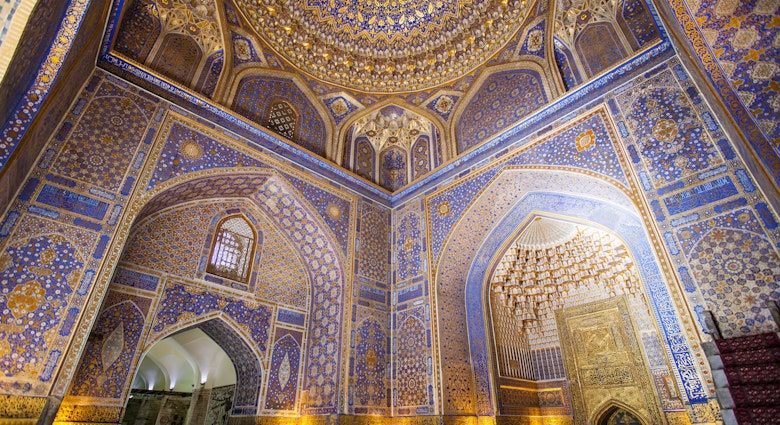
Astrotourism
Copy My Trip: Exploring Uzbekistan's cities, deserts and mountainsNov 21, 2024 • 5 min read
